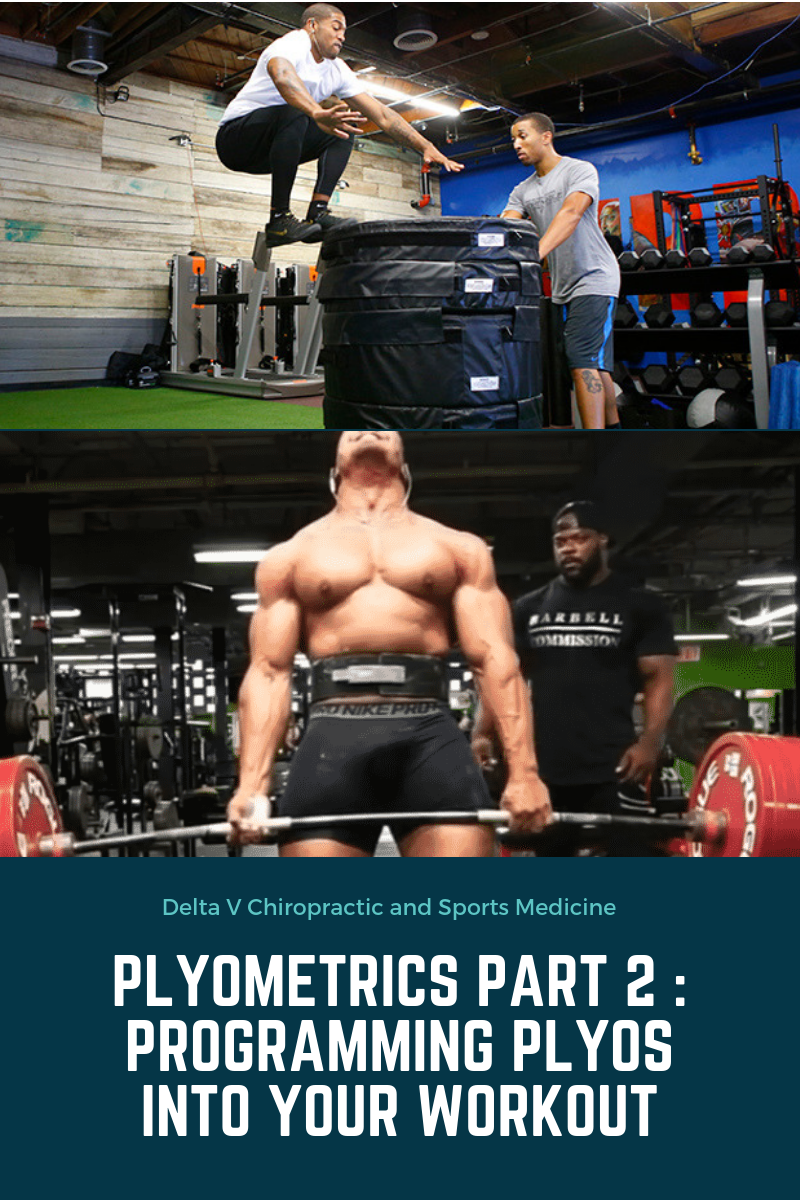Last time we covered plyometrics, it was all about what they are and how they work (full article here). This time, we can jump into the fun part - how can you start using them in your training cycles right now.
Plyometric Progressions
Because they can be so high intensity, finding the right place to start on the progression spectrum is important.
On average, the progression goes like this : start with two legs, then one leg, then add extra resistance. We further separate it into impact levels, height, direction, speed, and timing of repetitions. See the chart below for breakdown examples.
Of course, these are not the only example of exercises that are involved in plyometrics progressions. This is a progression for two legged jumping for the squat movement pattern. Instead of a step by step diagram, think of this as a conceptual guideline for choosing the exercises you like best or might help you the most.
Always start with the lowest impact activity on two legs and work toward progressively more difficult versions. The moment of highest impact is always coming back to the ground, especially with added height or momentum. The less time spent on the ground, the higher the intensity.
Training Cycles
So, you have a framework for putting together the progressions. Now you need to decide what will be the most beneficial. I’ve listed a few of the most popular training cycles that people use below, and what plyometric progressions will be the most helpful during that training cycle. There is not a mid-season or cross training cycle listed below because plyometrics programs are supposed to be HARD.
Hypertrophy & Growth
You want to do A LOT of plyos. Think of a big number, then add some more to it. The key here is to make sure that because they are high volume, they are not super high intensity.
This means hopping and skipping, low or medium box jumps, and other movements that use large muscle groups. Stay away from extra loads, great heights, depth drops, and small muscle group plyometrics (like jump ropes). Keep your rest periods relatively short, but rest between your sets. You want a deep burn in the muscles, but you shouldn’t be dying for breath before you start the next set.
Metabolic Conditioning
You want to do plyos that are controllable enough to add in bursts of intensity. Especially when conditioning for weight loss, doing intervals is important.
Your plyometric exercises should be mostly small muscle group exercises such as agility ladders and jump ropes mixed with bursts of high intensity, like a few big box jumps. You also want to keep your rest periods short and stay in constant motion as much as possible. The plyos for this cycle should be burners for the whole body and lungs.
Strength Consolidation
Your goal here is not to overdo the volume or the intensity, so you can recover between workouts and continue gaining strength.
Putting in plyos that are relatively low volume (think 8-10 reps per set) and high intensity is the way to go. Don’t add extra resistance here, but do try to push for distance/height with your plyos. Get plenty of rest between sets, and don’t rush the reps.
Power Generation
In this cycle, you are already doing a lot of explosive, low repetition work with your other lifts and your plyometric progressions should match that.
That means low reps, extra resistance to make them more effective, high speed for each rep, and lots of rest between sets. The big compound movements are going to be the best choices here, using the large muscle groups. Be careful managing your impact with these progressions - don’t use added weight for exercises that change elevation or add distance.
This should let you get started right away putting plyometrics into your workout plan. If you want specific advice on how to do that, feel free to leave a comment below or get in touch with us directly.
Dr. Paul Harris holds a Doctor of Chiropractic degree from Texas Chiropractic College and a Master’s of Exercise and Health Sciences from University of Houston Clear Lake. He is the owner of Delta V Chiropractic and Sports Medicine and an avid human movement specialist.





